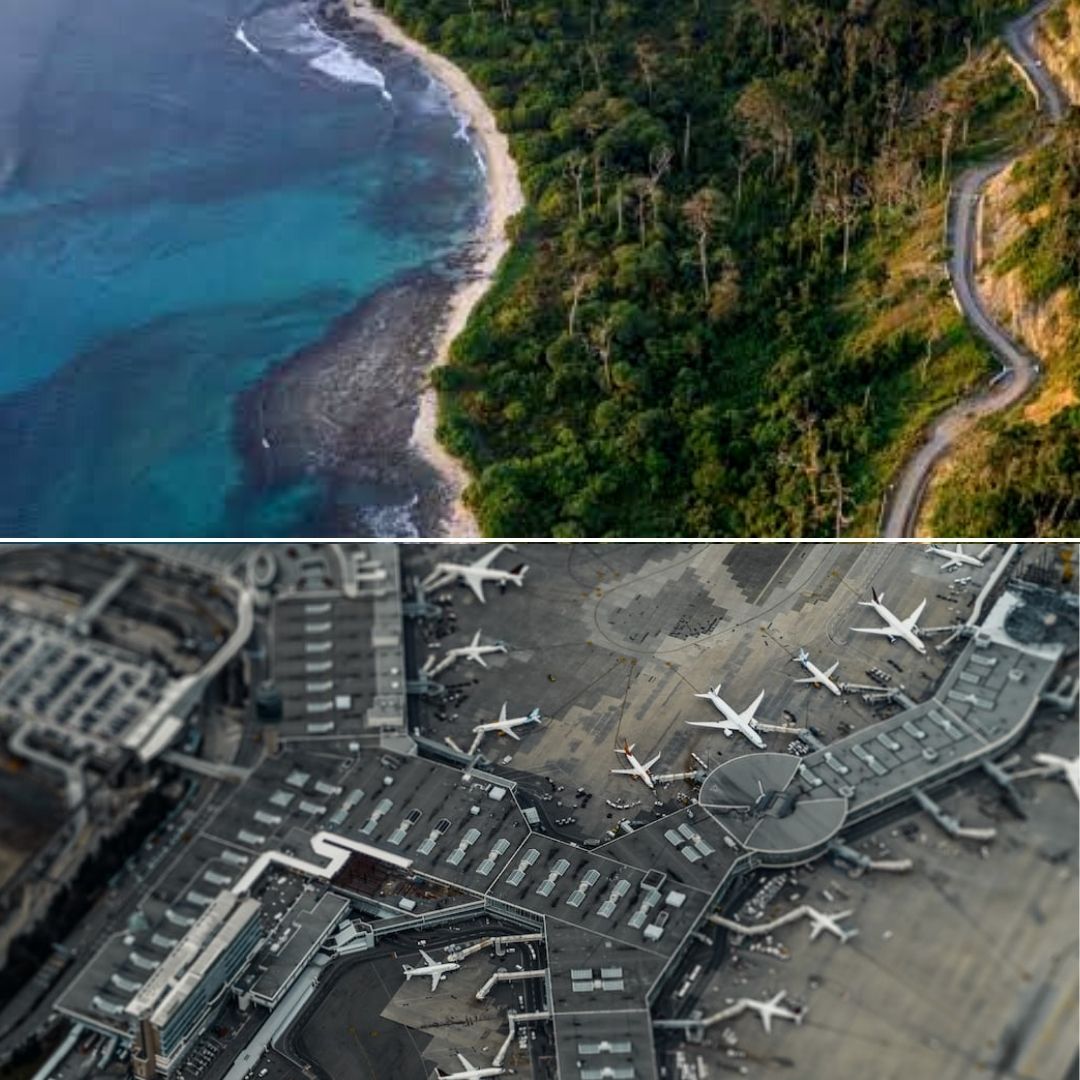Over 8 Lakh Trees And Rare Flora Around Great Nicobar Island To Be Cleared For Mega Strategic Project
Writer: Laxmi Mohan Kumar
She is an aspiring journalist in the process of learning and unlearning many things. Always up for discussions on everything from popular culture to politics.
India, 22 Sep 2022 8:52 AM GMT
Editor : Snehadri Sarkar |
While he is a massive sports fanatic, his interest also lies in mainstream news and nitpicking trending and less talked about everyday issues.
Creatives : Laxmi Mohan Kumar
She is an aspiring journalist in the process of learning and unlearning many things. Always up for discussions on everything from popular culture to politics.
The mega project worth Rs 75,000 crore will clear out a large area of forests and seabed from the Great Nicobar island, which was declared a biosphere reserve in 1989 and included in UNESCO's man and biosphere programme.
Andaman and Nicobar Islands are global hotspots for biological diversity and also happen to be a crucial strategic point for the country. In regard to this, a project was proposed to the Union environment ministry's Expert Appraisal Committee (EAC) for the development of a military-civil, dual-use airport, an international container trans-shipment terminal, a power plant based on gas, diesel, and solar energy, and an elaborate township.
The proposal was looked into by some of the premier institutes of India alongside the EAC, and the committee has finally given the nod to the development project. This has raised several environmental concerns as the project would require the clearing of more than eight lakh trees in the rainforests and result in the loss of about 12 to 20 hectares of mangrove cover and considerable coral cover.
Strategic Importance Of The Large Scale Project
The islands provide India with a commanding geostrategic presence in the Bay of Bengal and access to South and Southeast Asia. The project has been crafted utilising all these strategically beneficial positionings.
According to the letter sent to the environment minister by the Union home ministry, the proposed airport in the Gandhi Nagar-Shastri Nagar area would be under the operational control of the Indian Navy in a joint military-civil manner facilitates a dual-use. So while the airport will be functional for the public, it would also be used for other purposes such as defence, strategic, and national security.
While the projects were approved, the EAC also made it a point to address the environmental impact and how it could be potentially reduced. They have directed three independent committees to be set up to oversee pollution-related matters, biodiversity and welfare issues related to the indigenous tribes who will be relocated.
The Islands Are Home To Many
The project on the Great Nicobar Island is predicted to affect about 1,761 people, including the Shompen and Nicobarese tribal communities existing in the regions. While the EAC has directed to adopt mechanisms to ensure the tribes are not exposed to health and other risks, there has been widespread scepticism about the welfare of the communities.
There are possibilities for the tribals to be prone to human-induced diseases due to the expected influx of domestic and international populations with the arrival of the township and airport projects. As per a report by the New Indian Express, the Andaman and Nicobar administration would be setting up a special medical unit with top-quality infrastructure, medicine and medical staff within a span of six months to closely monitor this situation.
Apart from the people living in the region, the island is also home to some of the rarest flora and fauna. Some of these include the leatherback sea turtles, Nicobar megapode, Nicobar Macaque and the saltwater crocodiles. The project also lies within a ten-kilometre radius of the ecologically-sensitive zones of Galathea Bay National Park and Campbell Bay National Park.
Scientific recommendations were brought in due to this reason, and expert bodies suggested a 10-year roadmap to systematically implement mitigation measures.
Measures Suggested So Far
The Zoological Survey of India (ZSI), Wildlife Institute of India (WII) and Salim Ali Centre for Ornithology and Natural History (SACON) analysed the impact the project would have on biodiversity and found that the project site would not directly cause harm to flora and fauna of the islands.
Their inputs also focussed on the leatherback sea turtles, the largest of all living turtles, and said that due to their less site fidelity, they could move to suitable areas around the islands. However, they also did not rule out the need for an intensive assessment and research on the turtles and their movements to ensure an appropriate mitigation strategy is in place.
The ten-year mitigation plan was put into suggestion as it was clearly indicative that many of the active nests would be permanently destroyed, including 30 out of the 51 active nests of the indigenous Nicobar megapode. The project would also translocate the coral covers across ten hectares with about 16,150 coral colonies.
From the departmental end, the Administrative for the Environment and Forests Protection in Andaman and Nicobar will be preparing a mangrove conservation and management plan. The EAC directed them to construct wildlife corridors at eight locations connecting the forest and seashore. This would be expanded further into the building of culverts and canopy crossings at appropriate locations for the safe movement of wildlife.
In terms of the felling of the trees, the panel has asked the responsible officials to cut the trees in one go. Clearance should be conducted in a systematic and phased manner to ensure the safeguard of species nesting and living within the trees. Furthermore, trees with nesting holes of endemic owls are to be identified and geo-tagged with the help of the Salim Ali Centre for Ornithology and Natural History (SACON).
As for the development project, the EAC has set guidelines and has strictly taken a stance against the disposal of hazardous waste material, including batteries, pesticides, organochlorines, etc. Waste generated during the construction projects should be either recycled and reused or must be carefully transported away from the Nicobar Islands to the mainland for safe disposal.
Also Read: 'Trees Outside Forests': US, India Launches Program To Expand Green Cover In Country By 28 Lakh Ha
 All section
All section















